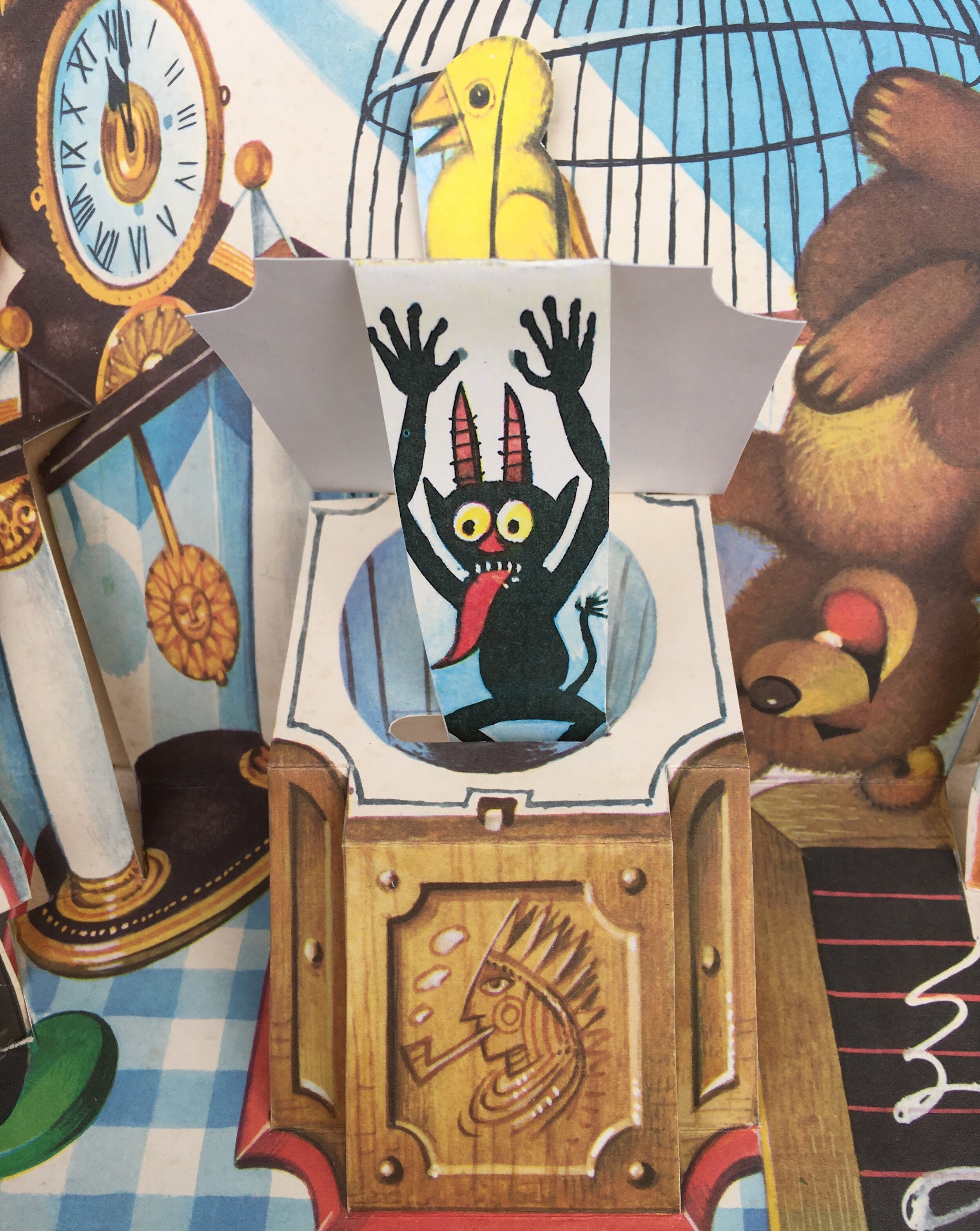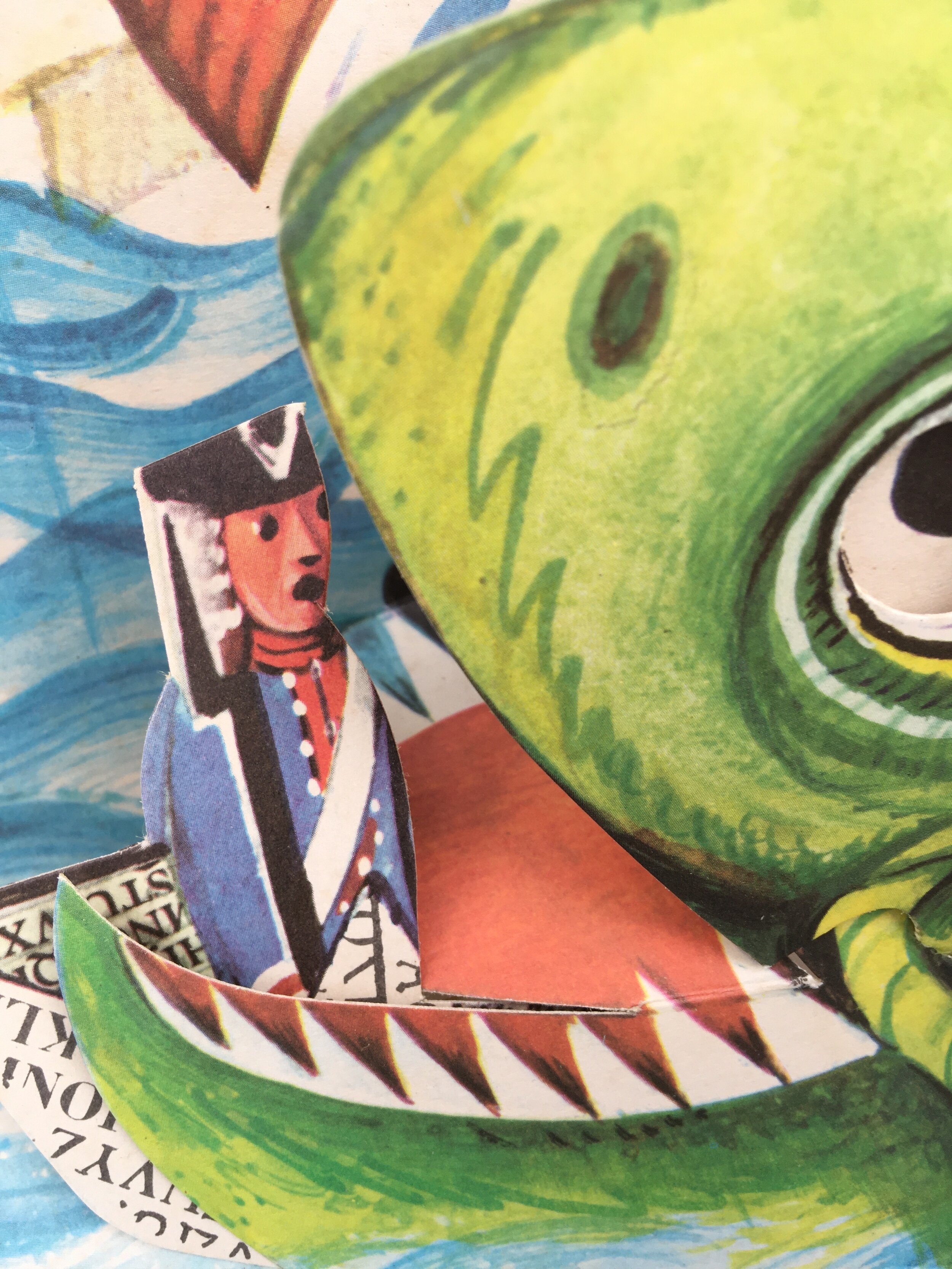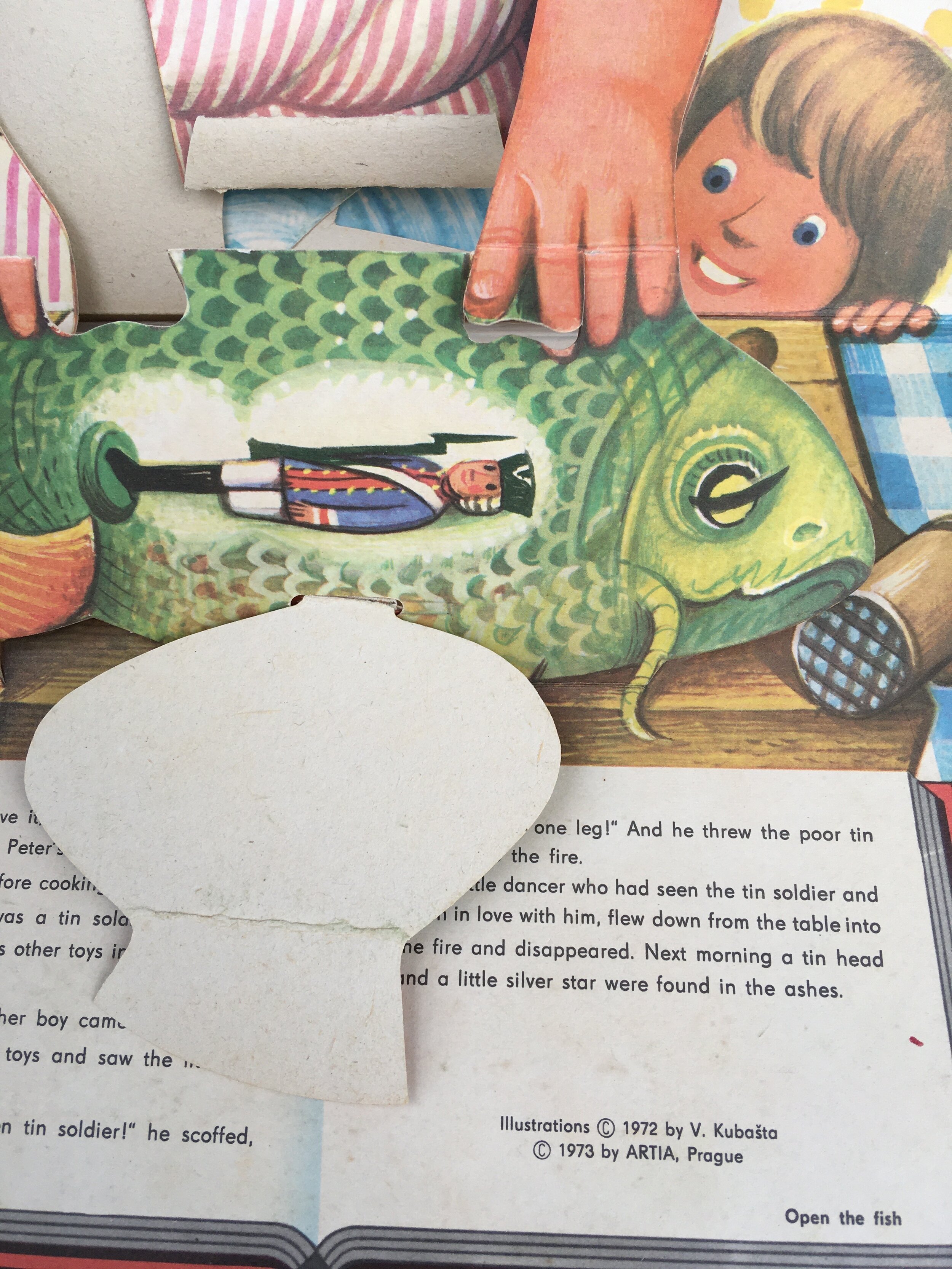This is simply too weird and wonderful not to share.
Somewhere around 1998 I discovered what seemed to me to be the true cosmic reason for the internet: namely, online used book stores that would allow me to summon home all the long-lost treasures of childhood. It is the closest I’ve ever come in my life to a runaway spending spree.
Memory, however, is slow, and so are used book sellers. It was some years till I remembered a beloved pop-up book of Hans Christian Andersen’s fairy tale “The Steadfast Tin Soldier”—but when I’d look online for it, either it wasn’t there at all, or there were multiple options and none with a photo of the cover to help me disambiguate. And then I’d forget again for a few years, before I’d look and run into the same conundrum.
But last month, as I was selecting my book purchases to bring home from a trip to see my parents in the U.S., this one came to mind again, and, sing praise to the heavens, there was a cover photo—which I recognized immediately. Yes, this was my long-lost book, and the seller assured that the pop-ups were intact (which is no minor consideration). So I ordered it and had a very happy reunion when I arrived Stateside.
It’s hard to appreciate fully someone else’s childhood memories, but bear with me a moment for a glance inside its pages:
As you can see on the first page here, it’s popping with color as well as with pop-ups. The lid labeled 25x lifts to reveal soldiers beneath—but all the toys, and the luscious cake, delighted little me long ago.
I spent hours and hours gazing longingly on the pink and blue castle, imagining myself as the ballerina, and wishing for swans as pets. I spent almost as much time keeping a fearful eye on the horned devil bursting up out of the snuff box.
As a little person living in big and scary New York City, I was deeply frightened at the thought of the tin soldier swept away into the sewer populated with rats, only to be swallowed up by a toothy green fish, like a toy Jonah.
But like the little boy in the picture, I shared in the joy at the tin soldier’s miraculous repatriation to the family when the cook bought the very fish he’d been eaten by. Somehow the shared death of ballerina and soldier in the fireplace seemed like the ultimate consummation, not a tragic end.
However, I’m no longer a little kid but an adult, and this time when I got to the end of the book, it wasn’t the narrative arc or even the delightful illustrations that captivated me or caused me to do a massive double-take. It was this:
Artia!!! That is, the publisher of English-language books in communist Czechoslovakia!
As far as I ever knew, I’d only discovered Artia in the past couple years as I researched for my memoir and then started reviewing Slovak novels in English on this blog. The very fact of its existence intrigued me enough to lead me to an autobiography by one of its chief translators, Rosemary Kavan. I’m still tracking down the extremely rare remaining copies of its works.
But now I know that I read my first Artia book not in my early forties but when I was four!
How did this book find its way to my house? My parents have no recollection. We had the occasional visitor who’d been behind the Iron Curtain to visit Czechoslovakia; did someone pick me up a copy and deliver it in person? Or did one of the socialist-friendly bookstores on Manhattan’s upper west side make a point of providing children’s books from the workers’ paradise, and it seemed to my mom like a good birthday gift for her daughter?
And is it possible that my affection for the visual arts of this part of the world has nothing to do with genetics or the happenstance of it being my first place to visit outside of North America but, in fact, because my taste had been formed by this charming book all those years ago?
Deep thoughts to be provoked by a pop-up book…







